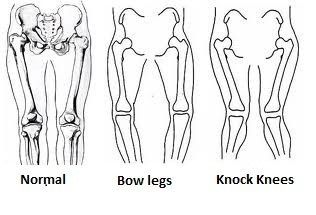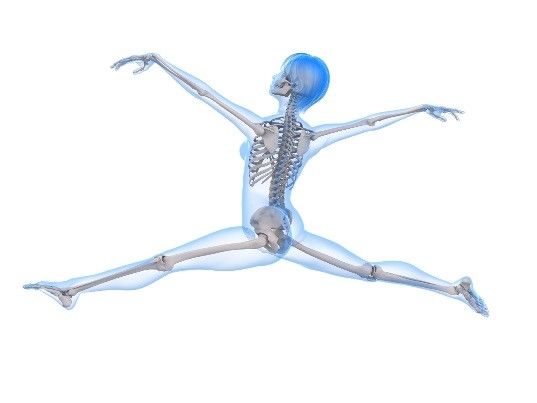HOW TO BUILD HEALTHY BONES IN CHILDREN
The best bone building years are during childhood and during the teenage years. These are the years when new bone is added to the skeleton faster than old bone is removed. As a result, bones become larger, heavier, and denser. These are the years we need to be concerned about building strong bones.
Bone formation continues at a faster pace than removal until peak bone mass is reached between ages 25-35. At 35 years of age, we begin to tear down more bone (resorption) than we rebuild (formation). This process will go on for the rest of our lives, so it is very important to build strong bones in your early years.
Important Factors: The two most important lifelong bone health habits to encourage now are proper nutrition and plenty of physical activity.
Proper Nutrition
Adequate calcium intake: Calcium is a chemical element whose symbol is Ca++. Calcium is the most abundant mineral in the body. In combination with phosphorus, it forms calcium phosphate, the dense, hard material of the bones and teeth.
Recommended calcium intakes for children and adolescents are:
|
Age |
Amount of Calcium a Day |
|
Birth to 6 months |
200mg |
|
6 months – 1 year |
260mg |
|
1 year – 3 years |
700mg |
|
4 years – 8 years |
1000mg |
|
9 years – 18 years |
1300mg |
A good source of calcium is dairy products. One glass of skim milk contains 302mg of calcium.
Recommended intakes for adults are:
Women:
|
Age |
Daily |
|
Pregnant & Nursing, under age 19 |
1300mg |
|
Pregnant & Nursing, over age 19 |
1000mg |
|
19 years – 50 years |
1000mg |
|
51 years – 70 years, on estrogen |
1000mg |
|
50 years – 70 years, no estrogen |
1200mg |
|
70+ years |
1200mg |
Men:
|
Age |
Daily |
|
25 years – 70 years |
1000mg |
|
70+ years |
1200mg |
For those who are lactose intolerant or have allergies to dairy products, there are other sources of calcium such as:
• Soy milk and products made from soybeans
• Tofu
• Dark green vegetables, like spinach and broccoli
• Nuts, like almonds
• Seafood, like canned salmon with bones, shrimp and sardines
Note: Common allergies include fish, seafood, eggs, peanuts, tree nuts, soy, wheat and gluten.
We need to get our calcium requirements every day! We use calcium for other body functions besides bone building. We need it for:
• Regulating our heartbeat
• Keeping blood pressure normal
• For normal blood clotting
• For the initiation of response from our nerves to our muscles
• For cellular activities
It is best to get your calcium requirements from food. If we do not get your daily calcium, our body will take calcium from our bones to meet the body's need. This can cause our bones to become brittle in later years. Consult your doctor before using any calcium supplements.
Vitamins and Minerals
 They work together to make healthy bones.
They work together to make healthy bones.
• Boron, found in green leafy vegetables, fruits, nuts and grains
• Magnesium, found in dairy products, fish, meat, apples, and grains
• Phosphorus, found in soda, eggs, nuts, meats, and grains
• Silicon, found in soybeans, green leafy vegetables, and grains
• Vanadium, found in fish, vegetable oils, meat, and grains
• Vitamin K, found in egg yolk, oatmeal, fish, olives, and grains
• Vitamin D, found in eggs, butter, fish, liver, milk, and oatmeal
A balanced diet will provide you with all of these.
Vitamin D
Calcium taken without adequate vitamin D will not be absorbed or used by the body. The relationship between calcium absorption and vitamin D is similar to that of a locked door and key. Vitamin D is the key that unlocks the door and allows calcium to leave the intestine and enter the blood stream. Vitamin D also works in the kidneys to help reabsorb calcium that otherwise would be excreted in the urine.
Vitamin D is manufactured in the skin following direct exposure to sunlight. The amount of vitamin D produced in the skin varies depending on:
• the time of day
• the season
• the latitude
• skin pigmentation
The manufacture of vitamin D in the skin is markedly diminished by:
• window glass
• clothing
• air pollution
• the use of sunscreen
Skin color also affects vitamin D production. The fairer you are, the more you make. As we age the ability to make vitamin D through the skin decreases. Individuals who are housebound and get no sunlight are unable to make vitamin D.Usually 10-15 minutes of exposure of hands, arms, and face 2-3 times a week (depending on skin sensitivity) is enough to satisfy the body's vitamin D requirement.
Vitamin D is measured in International Units (IU). Experts recommend a daily intake of 400 to 1000 IU per day depending upon your age:
• Children: 400 IU
• Adults <50: 400-800 IU
• Adults >50: 800-1000 IU
Do not take more than the recommended daily dose unless your doctor prescribes it. Massive doses of vitamin D may be harmful. Some calcium supplements and most multivitamins contain vitamin D. It is important to check the labels to determine how much each contains.
 Rickets is a condition in infancy and childhood caused by a deficiency of Vitamin D. The ability of the bone to support the body is seriously impaired. The bones become soft causing various degrees of deformity, including:
Rickets is a condition in infancy and childhood caused by a deficiency of Vitamin D. The ability of the bone to support the body is seriously impaired. The bones become soft causing various degrees of deformity, including:
• Bowlegs
• Knock-knee
• An improperly developed or misshapen skull giving the head a squared or boxed appearance
For more information, try our online class Bone Health for Child Care.
